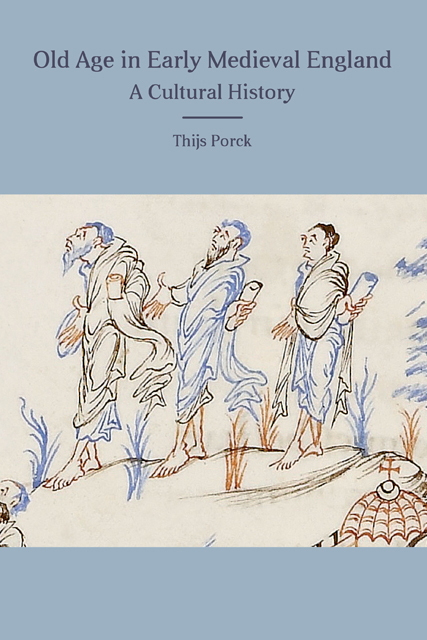Book contents
- Frontmatter
- Contents
- Illustrations
- Acknowledgements
- Abbreviations
- Introduction
- 1 Definitions of Old Age
- 2 Merits of Old Age
- 3 Drawbacks of Old Age
- 4 frode fyrnwitan: Old Saints in Anglo-Saxon Hagiography
- 5 hare hilderincas: Old Warriors in Anglo-Saxon England
- 6 ealde eðelweardas: Beowulf as a Mirror of Elderly Kings
- 7 gamole geomeowlan: Old Women in Anglo-Saxon England
- Conclusion
- Bibliography
- Index
- Anglo-Saxon Studies
1 - Definitions of Old Age
Published online by Cambridge University Press: 17 January 2023
- Frontmatter
- Contents
- Illustrations
- Acknowledgements
- Abbreviations
- Introduction
- 1 Definitions of Old Age
- 2 Merits of Old Age
- 3 Drawbacks of Old Age
- 4 frode fyrnwitan: Old Saints in Anglo-Saxon Hagiography
- 5 hare hilderincas: Old Warriors in Anglo-Saxon England
- 6 ealde eðelweardas: Beowulf as a Mirror of Elderly Kings
- 7 gamole geomeowlan: Old Women in Anglo-Saxon England
- Conclusion
- Bibliography
- Index
- Anglo-Saxon Studies
Summary
What goes on four legs in the morning, on two legs at noon, and on three legs in the evening? The answer to this ancient ‘Riddle of the Sphinx’ – a human being, who crawls on all fours as a baby, walks on two legs as an adult and walks with a cane in old age – is possibly the most well-known example of a schematic division of the life cycle into different phases. Such divisions of life into from three to twelve distinct ‘ages of man’ are frequently found in texts and visual art works, from Antiquity to the present day. These textual and visual schemes help to reveal how people conceptualised their lifespan and how they defined old age in relation to other phases of life. In this chapter, I look at how Anglo-Saxon authors and artists divided the life cycle into different phases and what these divisions may reveal about their conceptualisation of old age.
Following the publication of three fundamental books on the medieval life cycle in 1986, most treatments of the ages of man in medieval thought have concentrated on the later Middle Ages. In 2013, Cochelin presented an overview of the schematic periodisations of the human lifespan found in texts from the Christian West up to the year 1200. Within her sample of eighty texts, Cochelin found that thirty-four texts dating from between the sixth century to the year 1120 showed remarkably less variation than those of earlier and later dates. On the basis of these thirty-four texts, Cochelin then established a ‘universal’ life cycle definition:
between the sixth and the early twelfth centuries, the life cycle can contain three, four, five, six or seven ages, because the three main phases, pueritia, iuuentus, and senectus, can each be divided into two and, exceptionally for senectus, even into three ages. A life cycle of three is comprised of the three main phases; one of four means that one of the three phases has been subdivided and so on. Whatever the number of subdivisions, we are still facing one unique, if very flexible, way of conceiving the ages of man.
- Type
- Chapter
- Information
- Old Age in Early Medieval EnglandA Cultural History, pp. 16 - 51Publisher: Boydell & BrewerPrint publication year: 2019

